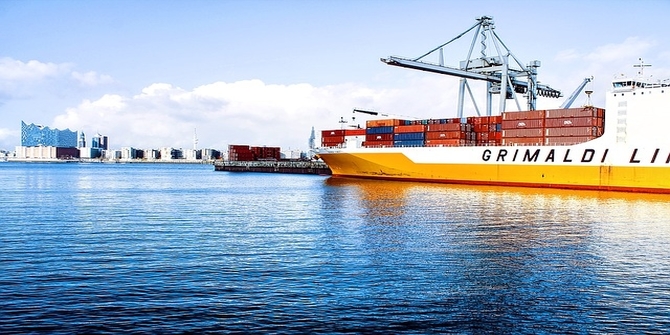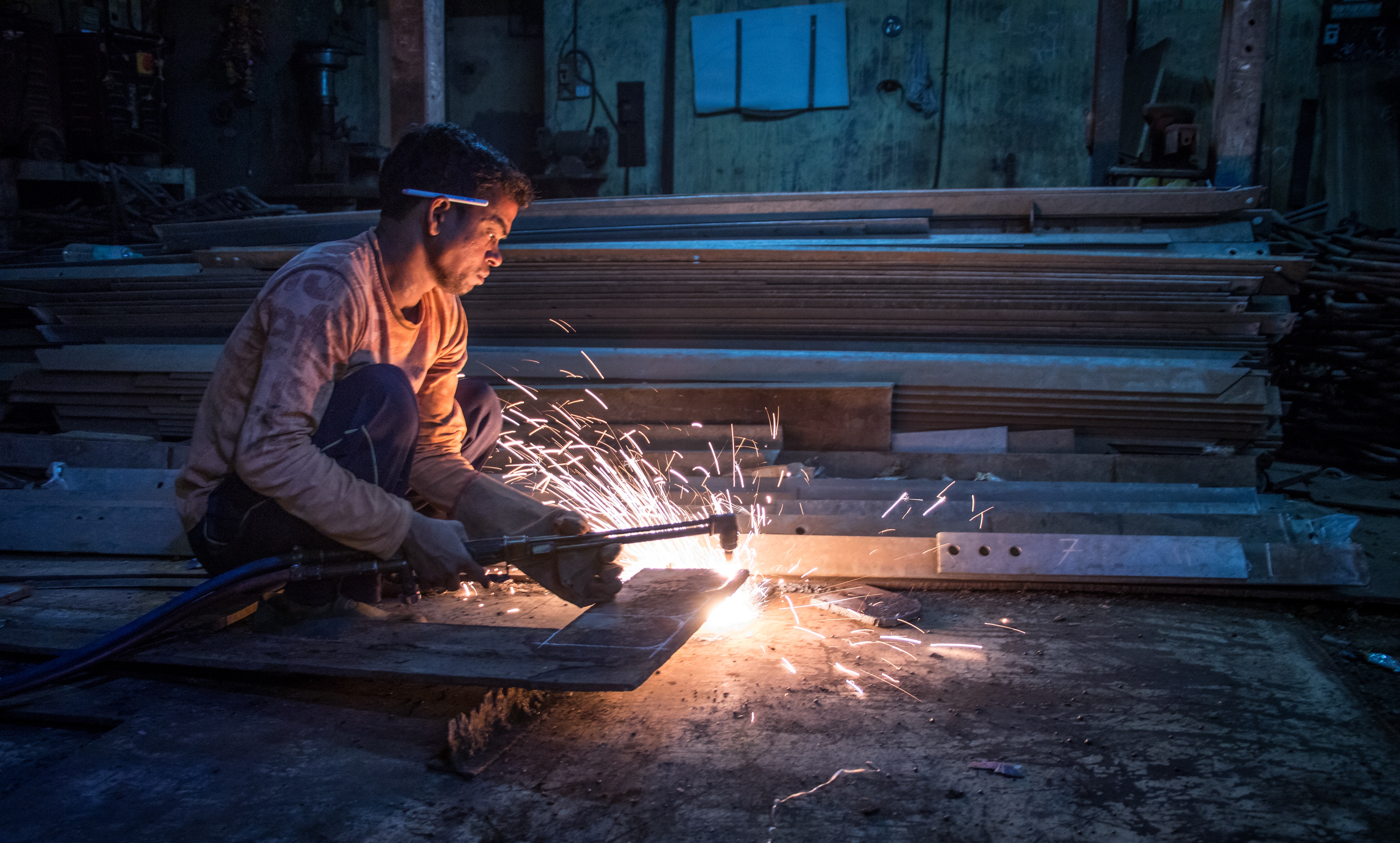As LSE’s Julia Huang commences her fieldwork in Assam, she finds that social enterprise development initiatives such as Rickshaw Bank tend to ignore the relational and sociopolitical aspects of poverty.
Shah Jahan Ali’s village, Chandokaity, in India’s north-eastern state of Assam, has completely vanished. The Brahmaputra River island on which his village was rooted for generations no longer exists, having been engulfed by a flood some years ago. The waterlogged floodplain is now so flat, the sandy soil so fine, it’s difficult to believe that an island had ever been there. No one can even pinpoint the island’s exact location; the river shifts its path by several kilometres every year, eroding more of the south bank, but leaving new fertile land for the district on the northern shore. “That is the character of the Brahmaputra, Son of God, giving to some and taking from others,” remarked one civil administrator.
Ali took his community to another char (river island), which had formed suddenly during the same flood season, and set up rudimentary shelters. Three other communities from flooded chars soon joined Ali’s group. This was six years ago. Today, the island’s 400 families must cobble together a piecemeal survival and hope that each year’s floods will not rise above shoulder level. Peanut and pulse cultivation provides a few months’ livelihood after the monsoon, and India’s flagship National Rural Employment Guarantee Scheme provides another few months’ income. For the rest of the year, the island’s men migrate to urban centres seeking short-term, unskilled-labour contracts in construction and cycle-rickshaw pulling. When I arrive in Assam, the men have just returned home for a few days to celebrate Eid-ul-Fitr with their families before resuming their urban lives. The holiday marks the end of the holy month of Ramadan when Muslims fast from dawn to dusk. This year, they pray for peace in their hearts and calm in the river.
Their prayers are not unwarranted: this year, Assam’s floods have affected all of the state’s 27 districts, displaced millions of people like Ali, and led to the deaths of 117. The initial wave of rice, daal (lentils), and potable water to aid people in flood-affected areas is provided by the government. But who steps in year after year to help people rebuild and improve their lives after each bout of uncontrollable flooding?
In the past decade, the international development community has shifted its enthusiasm toward market-driven approaches to poverty alleviation. Based on the premise that a top-down approach is a major reason for the failure of conventional government development programmes, social enterprises increasingly assert themselves as ‘best practice’ business models to achieve economic and social goals simultaneously. Self-defined antithetically to the paternalism of the aid industry, the inefficiency of the state, and the unscrupulousness of the capitalist market, social enterprises attempt to address the challenges of low-income and post-disaster communities.
Over 600 independent social-enterprise initiatives have emerged in the past two decades in India and have claimed to serve over 50 million vulnerable people (ranging from several hundred to several million individuals for each enterprise). These initiatives stimulate a growing circle of investors, consultants, and research bodies and sometimes seek absorption into public sector programmes. Social enterprises employ “innovative” models that profess to provide livelihoods and tackle poverty by providing “solutions” to challenges in agriculture, education, finance, health, housing, and sanitation.
One such social enterprise, Rickshaw Bank, seeks to address the difficulties faced by 10 million cycle-rickshaw pullers in India: irregular income, high daily vehicle-rental fees to patrons who own the rickshaws, and exclusion from formal and public services. Rickshaw Bank aims to improve the quality of life of rickshaw pullers through the provision of asset-based loans that enable the ownership of a redesigned rickshaw, formal self-employment within two years, and access to key social services. The enhanced income and dignity, Rickshaw Bank contends, empowers rickshaw pullers to improve their living conditions, send their children to school, and invest in their futures. In recent years, by deeply understanding the challenges facing urban labourers, Rickshaw Bank has helped thousands of rickshaw pullers achieve ownership of a stable means of production.
But it remains unable to help Ali, who spends half of the year in the town of Sibsagar working as a rickshaw puller. He pays 50 rupees each morning to the rickshaw patron (who owns and rents out 60 rickshaws) and pulls an exhausting 16-hour workday, harassed by both police and customers. At night, he collapses alongside dozens of others in a rented communal room costing him 300 rupees per month. Although his living and working conditions are harsh, Ali cannot avail of the benefits of Rickshaw Bank because his life is at home with his family, on the rich alluvial fields on the char in the Brahmaputra—he is not trying to become a permanent rickshaw puller.
Social-enterprise development practices such as Rickshaw Bank tend to ignore the relational and sociopolitical aspects of poverty. The managers of such enterprises often do not inquire into the reasons why people are poor, or the conditions under which they became rickshaw pullers (or other informal labourers) in the first place. For the majority of urban, informal workers who rely on labour contracts compatible with a seasonally migrant life, there are no advantages to a long-term patronage by a social enterprise; indeed, the practice may even delink labourers like Ali from other helpful systems of brokerage they depend on.
Over the next 20 months, I will investigate the established and emerging structural effects of programmes such as Rickshaw Bank. I hope to learn about the experiences of the urban poor, and their rural families, who are the participants and non-participants of market-driven development efforts. My research focuses on three social groups that are likely to be differently affected by changes stimulated by Rickshaw Bank: rickshaw pullers who participate in the social enterprise; those like Ali who are still embedded in short-term, informal labour contracts; and upwardly mobile people who were formerly rickshaw pullers, but who are now pursuing other activities. I will employ multiple ethnographic approaches to capture people’s aspirations for social mobility; valuations of work and hierarchy; self, societal, and state perceptions; and household and livelihood outcomes. My research aims to combine the strengths of qualitative and quantitative methods. The qualitative study will consist of semi-structured and structured interviews, participant observation of daily life and key events, life histories, and social-network mapping in a town of 38,000 people. The quantitative study will include structural-equation modeling and survey to test the external validity of key ethnographic causal complexes across 11 urban areas in Assam where Rickshaw Bank operates.
Follow my journey through ethnographic research and the lived realities of Assam’s working poor on this blog.
Julia Huang is a PhD Candidate at LSE’s Department of Anthropology.









Great stuff! Keeping it coming and good luck with your work, Juli!
It is surprising that your post makes no mention of the recent violence in Assam. Assam is a highly infiltrated and unstable state, and it is worth mentioning that in your research.
Here are some other points for your consideration: IIM-Ranchi has completed a good case study on the situation of rickshaw pullers. You will find that the story about rickshaw pullers is the same across India–nothing new in Assam.
Also, if you are interested in the engulfment of land by flood, you should visit West Bengal. The kaliachak area of district town Malda has been devastated by flood and lacs of people have lost their land and homes. Many of the rickshaw pullers, migrant labourers throughout India and in the Gulf Area hail from Malda. It would be interesting for you to travel to Malda so that your case study can have a comparative perspective as well.
Best of luck.
Your research sounds quite interesting, I have only skim read it, but I wanted to ask you a question about the topic area. What makes your work anthropological and not a study in the field of development? Is it not a problem for you that one might construe your work as that of development, or is that an added compliment?
It would seem to me that the two fields are striving in different directions. If you think I am wrong I would love to know why.
Many thanks,
J. Rose
(Currently studying an online short course in Social Entrepreneurship at Oxford University)